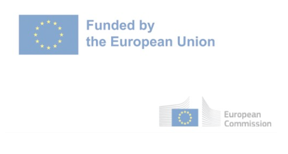LOW-TROPHIC AQUACULTURE INFRASTRUCTURES AS NATURE BASED SOLUTIONS: ESTABLISHING FRAMEWORKS AND SUSTAINABLE AQUACULTURE PRACTICES
Background
Low trophic aquaculture, including species like bivalves and seaweed, offers a promising opportunity for a sustainable expansion of the global aquaculture while delivering valuable ecosystem goods and services. The EU BIOGEARS project demonstrated that biobased aquaculture gears (ropes) are a more sustainable in aquaculture production than conventional fossil-based options, helping to reduce plastic pollution in suspended bivalve culture through the circular economy . This study aims to evaluate the performance of new biobased ropes with proved mechanical properties, in low trophic mussel and seaweed aquaculture within hybrid blue-grey infrastructures such as offshore longlines and rafts. Integrating biobased aquaculture gears into these infrastructures could enhance their effectiveness as nature-based solutions (NbS ). The findings from this study will be used to assess the efficacy of these infrastructures as NbS in TRANSEATION project and to guide the implementation of biobased gears in the aquaculture sector.
Methodology and aims
In the TRANSEATION project, two new biobased rope prototypes (T1 and T2) have been developed, enhancing the mechanical characteristics of the best-performing biobased B2 rope prototype in the previous BIOGEARS project . All three biobased prototypes (T1, T2, B2) are based on compounds of commercially available biopolymers and manufactured with industrial processes to be fit-for-purpose , with the required technical and functional properties to be a cost-effici9ent alternative to the conventional fossil-based mussel rope counterpart (GR). Throughout 2024 and early 2025, the setup of a longline and a raft as low trophic aquaculture demonstrators was carried out, which included maintenance and repair activities on the infrastructures. Additionally, several pieces of equipment were installed in the infrastructures, including current meters, pH meters, acoustic sensors, and chlorophyll sensors, aiming to continuously monitor environmental parameters that can impact mussel and seaweed cultivation . Before setting up the cultures, a monitoring plan for the environmental parameters was established, along with the experimental design for the aquaculture trials at sea .
Aiming to evaluate the efficacy of the low trophic aquaculture infrastructures as NbS , the following steps were also undertaken: 1) t he development of a S ystem A pproach Framework (SAF) into an applicable ecosystem-based management (EBM) Framework that provides a systematic and stepwise guidance for the planning, development, implementation, monitoring and evaluation of hybrid NbS, 2) the establish ment of a framework with the identification of indicators to evaluate the benefits and potential trade-offs of these NbS, particularly concerning marine biodiversity and ecosystem services protection and restoration . Finally, in May 2025 the setup of the culture of mussel seeded in biobased rope prototypes (B2, T1, T2) and fossil-based counterparts (GR) was conducted.
Results
The preliminary results on the aquaculture performance of the biobased ropes compared to fossil-based counterparts will be presented regarding the evolution of mussel growth and rope mechanical properties. Besides, the adjustment of the established frameworks to the infrastructures will be assessed.
